Description
A **Handbook for Mechanical Engineering** tailored for competitive exams like **GATE**, **IES**, **PSUs**, and others should ideally focus on providing concise, structured, and easily accessible content that covers all important topics. Such a handbook should assist with quick revisions, concept understanding, and problem-solving skills.
Here’s an outline of the key contents and topics that should be included in such a handbook:
—
### **1. Engineering Mechanics**
– **Statics and Dynamics:**
– Laws of motion
– Equilibrium of particles and rigid bodies
– Analysis of forces, moments, and couples
– Friction, Inclined planes, and Lifting machines
– Kinematics and kinetics of particles and rigid bodies
– Work-energy principle, Impulse-momentum principle
– Virtual work
—
### **2. Strength of Materials**
– **Stress and Strain:**
– Types of stresses (normal, shear, thermal, etc.)
– Poisson’s ratio, Young’s modulus, Bulk modulus, Shear modulus
– Deformation in materials, Strain energy
– **Shear Force and Bending Moment:**
– Shear force diagram, Bending moment diagram, Calculation techniques
– **Bending, Torsion, and Axial Loads:**
– Bending stress, Torsional stress
– Statically determinate structures
– **Deflection of Beams:**
– Method of deflections, Moment-curvature equation
– **Columns and Struts:**
– Buckling and critical load calculations
—
### **3. Fluid Mechanics**
– **Fluid Statics:**
– Pressure, Buoyancy, and Stability of floating bodies
– Manometers and pressure measurement
– **Fluid Dynamics:**
– Bernoulli’s equation, Continuity equation, Navier-Stokes equations
– Flow types: Steady, Unsteady, Laminar, and Turbulent flow
– **Flow Through Pipes:**
– Darcy-Weisbach equation, Moody chart, Pipe networks, Minor losses
– **Boundary Layer Theory:**
– Laminar and Turbulent boundary layers, Separation and drag
—
### **4. Thermodynamics**
– **Laws of Thermodynamics:**
– First law, Second law, Entropy, and Enthalpy
– Internal energy and specific heat
– **Thermodynamic Cycles:**
– Carnot cycle, Rankine cycle, Brayton cycle, Refrigeration cycle
– **Properties of Pure Substances:**
– P-V-T relations, Mollier diagram, T-S diagram
– **Heat Engines and Refrigerators:**
– Efficiency, Coefficient of Performance (COP)
– **Entropy and Exergy:**
– Entropy generation, Exergy analysis
—
### **5. Heat Transfer**
– **Modes of Heat Transfer:**
– Conduction, Convection, Radiation
– Fourier’s law of conduction, Newton’s law of cooling
– Stefan-Boltzmann law of radiation
– **Heat Exchangers:**
– Types, Effectiveness-NTU method, LMTD method
– **Dimensional Analysis:**
– Buckingham π theorem, Heat transfer correlations
– **Boiling and Condensation:**
– Heat transfer during phase change, Critical heat flux
—
### **6. Manufacturing Processes**
– **Casting, Molding, and Welding:**
– Processes: Sand casting, Die casting, Injection molding, etc.
– Weldability, welding defects, and different welding processes (arc welding, TIG, MIG, etc.)
– **Machining and Machining Tools:**
– Turning, Milling, Drilling, Grinding, etc.
– Cutting tools, Tool wear, Cutting force calculation
– **Forming Processes:**
– Rolling, Forging, Extrusion, Drawing, Bending, Spinning
– **Additive Manufacturing:**
– 3D Printing technologies and applications
– **Metrology:**
– Measurement tools (Vernier caliper, Micrometer, etc.), Tolerance and fits, Surface finish measurement
—
### **7. Industrial Engineering**
– **Operations Research:**
– Linear Programming, Integer Programming, Simplex method
– Transportation and Assignment problems
– **Production Planning and Control:**
– Forecasting, Capacity planning, Scheduling techniques (Gantt charts, PERT/CPM)
– **Inventory Management:**
– EOQ, Safety stock, Reorder point, ABC analysis
– **Quality Control:**
– Statistical quality control (Control charts, Six Sigma)
—
### **8. Machine Design**
– **Design of Machine Elements:**
– Shafts, Couplings, Bearings, Springs, Gear Design
– Belt, Chain, and Rope drives
– **Fatigue, Fracture, and Wear:**
– S-N curve, Goodman’s and Gerber’s fatigue theories
– Design for endurance and reliability
– **Design of Power Transmission Elements:**
– Clutches, Brakes, Gearboxes, Flywheels
—
### **9. Theory of Machines**
– **Kinematics and Dynamics of Machines:**
– Linkages, Mechanisms, Gear trains
– Velocity and acceleration analysis using graphical and analytical methods
– **Vibrations:**
– Free and forced vibrations, Damped and undamped systems
– Natural frequency, Resonance, Vibration isolation
– **Cams and Governors:**
– Types of cams, Cam profiles, Governor mechanisms
—
### **10. Control Systems**
– **Basic Control Theory:**
– Laplace transforms, Transfer function, Block diagrams
– Open loop and closed loop systems
– **Stability and Control:**
– Routh-Hurwitz, Nyquist criterion, Root locus
– PID controllers, Time domain analysis
– **State Space Analysis:**
– State space representation, Stability analysis
—
### **11. Electrical Engineering (For Mechanical Engineers)**
– **Basic Electrical Circuits:**
– Ohm’s Law, Kirchhoff’s Laws, Power and Energy
– Series and parallel circuits
– **Electrical Machines:**
– Motors (AC, DC), Generators, Transformers, and Alternators
—
### **12. Material Science and Engineering**
– **Structure of Materials:**
– Atomic structure, Crystallography, Grain structure, Defects in solids
– **Properties of Materials:**
– Mechanical properties (Tensile, Hardness, Toughness)
– Thermal, Electrical, and Magnetic properties
– **Heat Treatment:**
– Annealing, Normalizing, Quenching, Tempering, Hardenability
– **Composites and Smart Materials:**
– Fiber reinforced composites, Shape memory alloys
—
### **13. Environmental Engineering**
– **Environmental Impact and Sustainability:**
– Pollution control, Waste management
– Sustainable design practices
– **Energy Efficiency:**
– Renewable energy sources (solar, wind, biomass, etc.)
—
### **14. Important Formulae and Tables**
– **List of Key Formulae:**
– Thermodynamics, Fluid mechanics, Heat transfer, Strength of materials
– Machine design and vibrations
– **Material Property Tables:**
– Stress-strain data, Thermal conductivity, Modulus of elasticity
– **Constants and Conversion Factors:**
– SI unit conversion, Physical constants
—
### **15. Previous Years’ Papers & Practice Problems**
– **Previous Years’ Solved Papers:**
– GATE, IES, PSUs
– **Practice Problems:**
– Chapter-wise problems for practice, along with detailed solutions
—
### Study Tips for Competitive Exams:
– Focus on **core concepts** and avoid memorizing complex derivations.
– Practice problems regularly to improve problem-solving speed.
– Use a **revision strategy**: revise important formulas, charts, and tables daily.
– Take timed mock tests to simulate the exam environment.
—
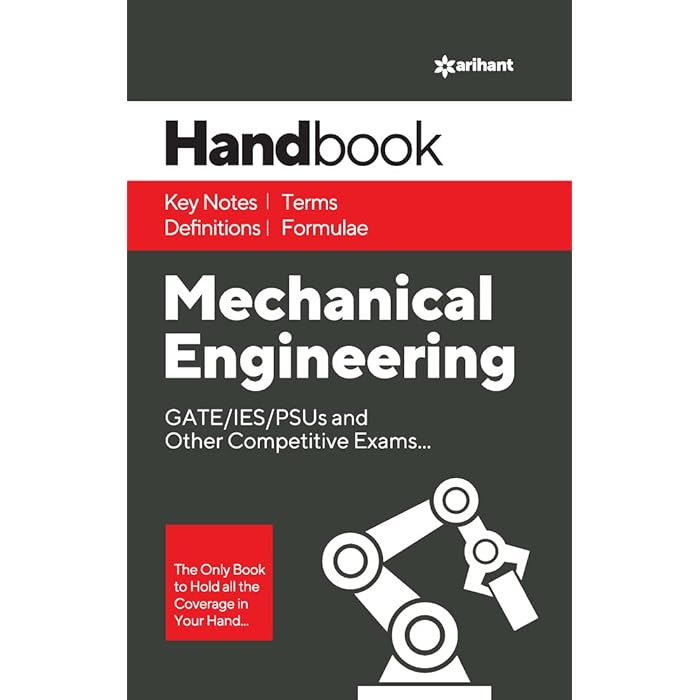
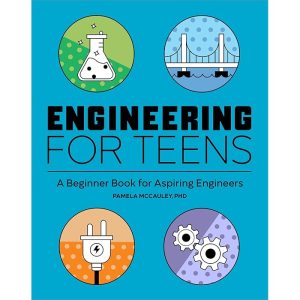
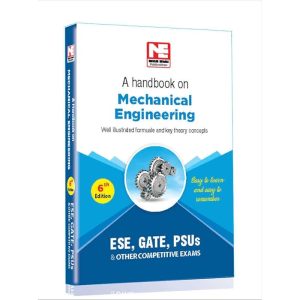
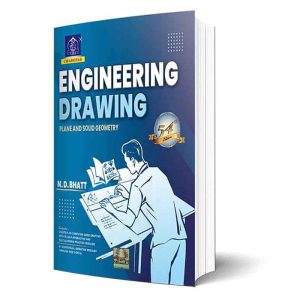
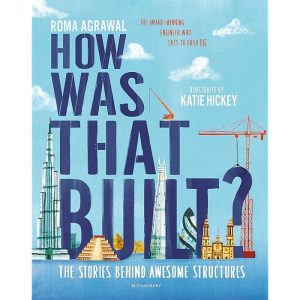
Reviews
There are no reviews yet.